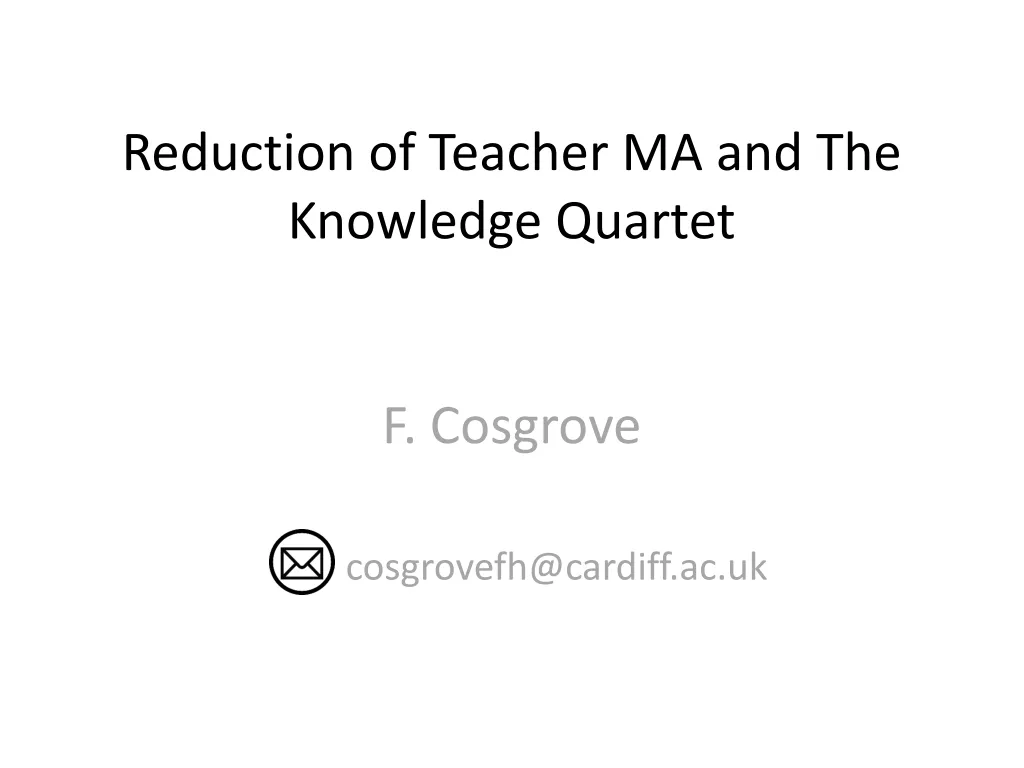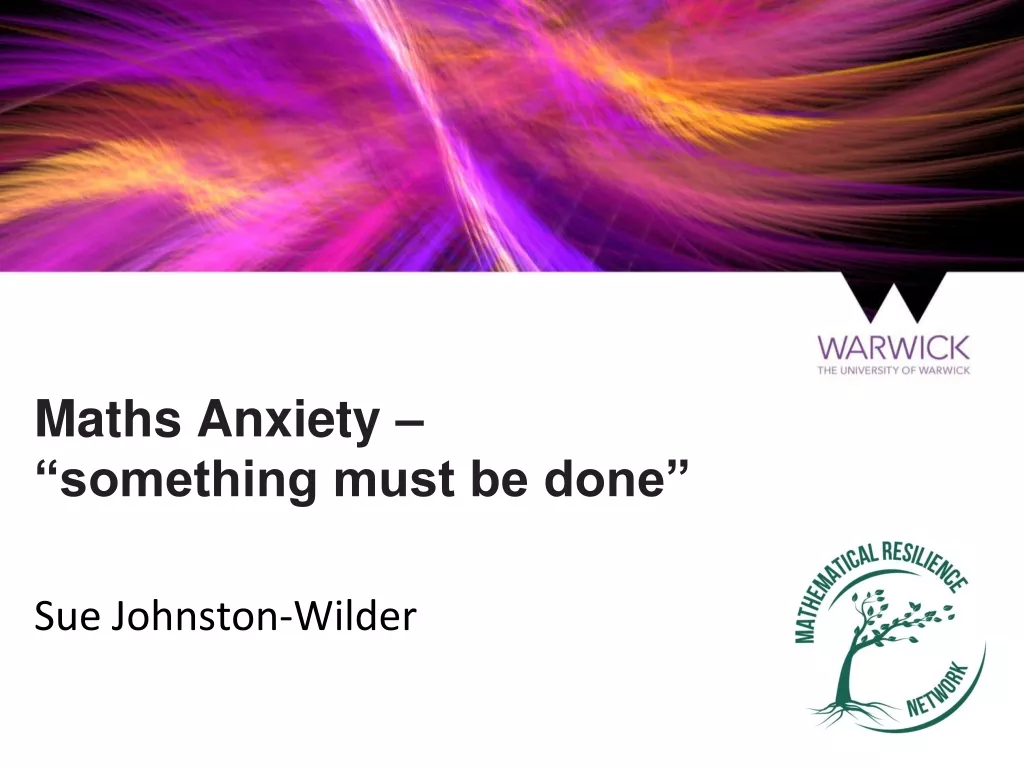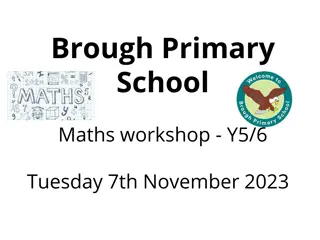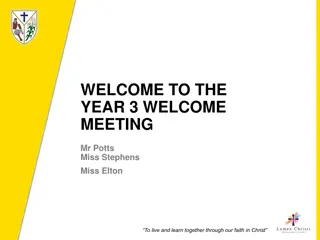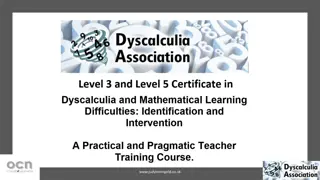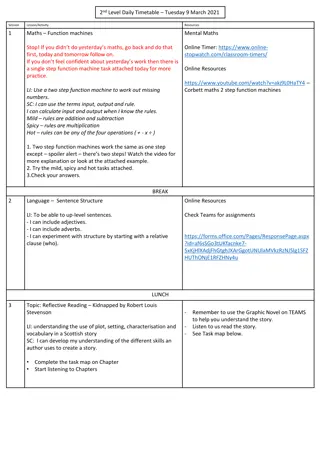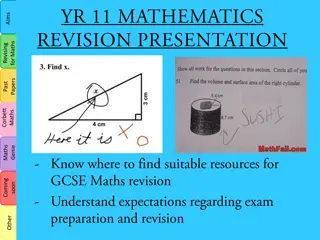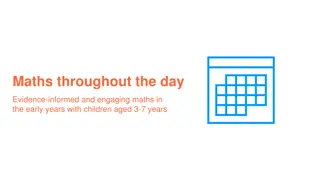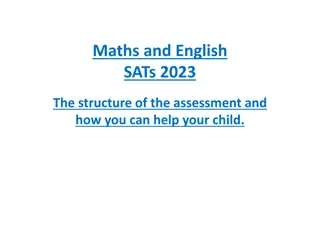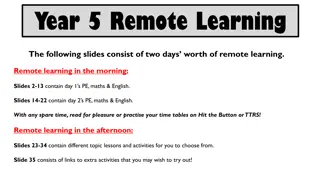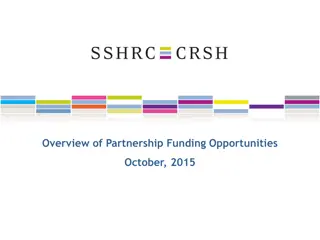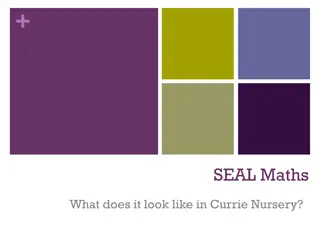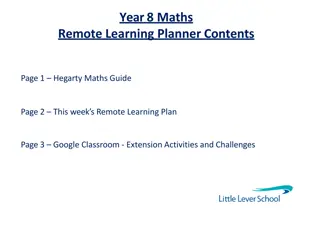Innovative Maths Teaching Approach for Partnership and Support
This workshop introduces a new approach to teaching maths, focusing on concrete, pictorial, and abstract methods. Emphasizing problem-solving, reasoning, and fluency, the program aims to enhance children's understanding through interactive activities and practical learning. Explore multiplication and division concepts through hands-on experiences and engaging discussions. Discover effective strategies to improve mathematical skills and foster a collaborative learning environment.
Download Presentation

Please find below an Image/Link to download the presentation.
The content on the website is provided AS IS for your information and personal use only. It may not be sold, licensed, or shared on other websites without obtaining consent from the author.If you encounter any issues during the download, it is possible that the publisher has removed the file from their server.
You are allowed to download the files provided on this website for personal or commercial use, subject to the condition that they are used lawfully. All files are the property of their respective owners.
The content on the website is provided AS IS for your information and personal use only. It may not be sold, licensed, or shared on other websites without obtaining consent from the author.
E N D
Presentation Transcript
In this workshop we aim to: Encourage partnership Demonstrate Share tools Offer tools for use at home Support Improve (4 week programme)
We have adopted a new approach to teaching maths, these are the main principles: It is a concrete, pictorial and abstract approach Problem solving and reasoning are very important, children need to be able to explain the process they used Useful questions: Prove it How did you get to the answer Can you show me how you did that?
Variation calculations are not always recorded in the same way E.g. 5x4 = 4x5 20= 4x 20 5 = Looking out for patterns is important. Fluency Children count daily in 2s, 3s, 5s, 10s Learning number bonds (not only to 10) Moving up, down, forwards and backwards on a 100 square
Teaching Multiplication Begin to record multiplication as repeated addition eg.5+5+5+5 = 4 lots of 5 = 4x5 Important for children to recognise when it isn t repeated addition e.g. 5+5+5+6 Make groups of objects and record as a repeated addition. Use jottings to record.
Begin to use x and = signs to record calculations, 5 x 3 = 15 Use arrays and jottings to model multiplication and support the understanding that multiplication can be done in any order. 5 x 3 (5 lots of 3) Is the same as 3 x 5 (3 lots of 5)
Multiplication vocabulary lots of product groups of multiply times repeated addition
Teaching Division Year 2 Children use their understanding of halving shapes and objects to begin to halve numbers (to 20) and to understand that halving is sharing into 2 equal groups. Continue to understand division as sharing or grouping equally through practical activities, jottings and discussion Eg. 8 2 =8 shared equally into 2 groups. Begin to use and = signs to record calculations.
For example: You have 30 counters. How many equal groups can you make?
Division vocabulary groups of divided between shared between sharing shared equally
Teaching Addition Foundation Begin to relate addition to counting and combining two sets of objects through role play, games and guided practical activities. and If you have 3 apples and your friend has 2 apples, how many apples altogether?
Begin to use + and = signs to record calculations. Develop understanding of addition as counting in steps along a number line. 7 + 3 = 10 5 + 4 = = 6 + 2 11 + 5 =
Year 2 expectations To be able to partition numbers into tens and units and use jottings to support their calculations. Eg.12+23 = (10+2) plus (20+3) = (10+20) + (2+3) = 30 + 5 = 35 Begin to calculate mentally and explain how they have worked out the problem. To look for links within their maths, drawing on all their knowledge e.g. doubles, number bonds, repeated addition etc. To know which is the most efficient strategy to solve a problem.
Counting and understanding number Explain what each digit in a two-digit number represents = +
Children continue to use equipment to represent 10s and 1s. For example Dienes, Numicon and multilink They then move on to represent 10s and 1s like this:
In addition we would this representation to show the addition sum and combine the 10s and 1s: 15 + 12 = + =
Now try these; 14 + 15 = 11 + 23 = 15 + 11 =
Addition vocabulary add sum double more than greater larger increase more counting on
Teaching Subtraction Begin to relate subtraction to taking away and counting how many are left through role play, games and guided practical activities. If you have 5 apples and you give 2 away, how many do you have left?
The children may use a part, part whole model in subtraction. Finding a missing part, given a whole and a part Children represent a whole and a part and understand how to find the missing part by subtraction. Part, part whole models are also used in addition, multiplication and division
Year 1 Begin to use - and = signs to record calculations. To understand that unlike addition, subtraction can t be done in any order. To know that they need to take away from the larger number. For example: 7-3=
Children then begin to use their wider number knowledge to solve problems e.g knowledge of number bonds and doubles. 10 take away 6 = 14 take away 7 =
Partition numbers into tens and units to support calculations. Eg. 25(20+5) - 11(10+1) - = 28 - 14 =
In subtraction we would this representation to show the subtraction sum and take away the 10s and 1s: 15 - 12 = - 12 =
Now try these; 19 - 8 = 17 - 12 = 25 - 11 =
In subtraction when we do not have enough ones we have to exchange a ten for ones: 15 - 9 = - 9 =
Subtraction vocabulary Count back How many less? How many are left? Take away Fewer Difference between Subtract Minus
I have 3 crayons. I have 3 crayons. How many more will How many more will make 10? make 10? Answer 7 If you got it right move on 5 spaces
What is 35 doubled? Answer 70 If you got it right move on 1 space


